
At Clean Grewp, we recognise that your laundry ducts are the lifeline of your drying processes. You probably use your dryer every day, but when was the last time you thought about getting the dryer ducting cleaned. Dirty dryer ducts will eventually result in a mechanical failure of the tumble dryer. However, a breakdown could be the least of your problems - they can also hide a silent threat. Accumulated dust and lint not only compromise efficiency but pose a significant fire hazard. Our dedicated laundry duct cleaning service is designed to combat these risks, ensuring a safe and compliant operation.
Imagine the pain and stress of running your hotel, guest house or care home with no dryer for just 48 hours and you'll realise how dependant you are on your commercial dryer. How about 7 days, 2 weeks?
Clean Grewp can help you avoid the pain.
Swift Quotation and Easy Booking
Understanding that no two laundry rooms are alike, we initiate our service with a bespoke inspection and quotation. This tailored approach ensures that our dryer duct cleaning solutions meet the specific needs of your site. Send us some photos of your ducting and we will get you a tailored quote and availability back within 60 minutes.
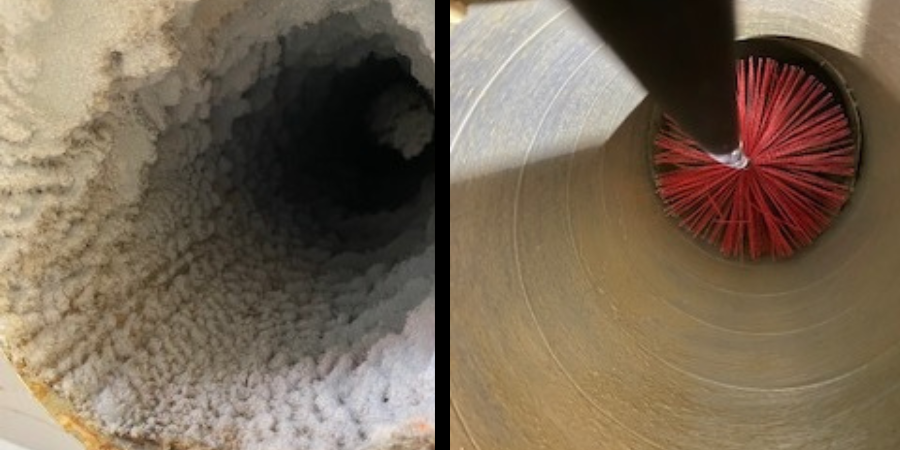
Laundry Duct Cleaning Process
Revive Your dryer ducts with our premier duct cleaning service. For a transparent, fixed fee, you will get immaculate laundry ducts with our all-inclusive cleaning process. Our experienced duct cleaners use cutting-edge brushes and robust vacuum systems to eradicate every trace of lint and debris. We don’t just clean; we will rejuvenate your ducting to mint condition.
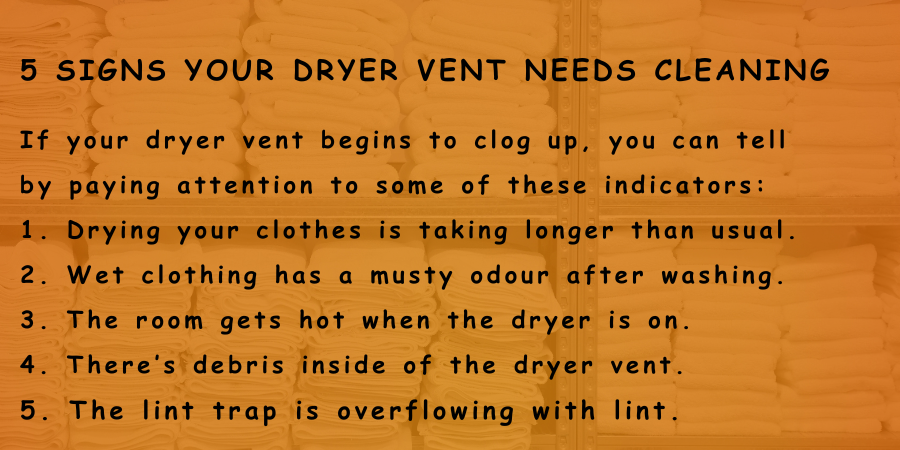
Rigorous inspection and accreditation
Our duct cleaner will undertake an extensive visual survey of your dryer’s ducts, lint chambers, extractor fan and dryer. Then create a detailed report on the pristine condition of your laundry ducts, accompanied by all the necessary documentation to keep you at the forefront of compliance. Our Foremost Concern is in accordance with the Regulatory Reform (Fire Safety) Order 2005, ensuring that your laundry ducts stay safe between cleans. We will also perform a backdraft check to verify efficient operation, providing you with a certificate of performance and any recommendations for further improvements.
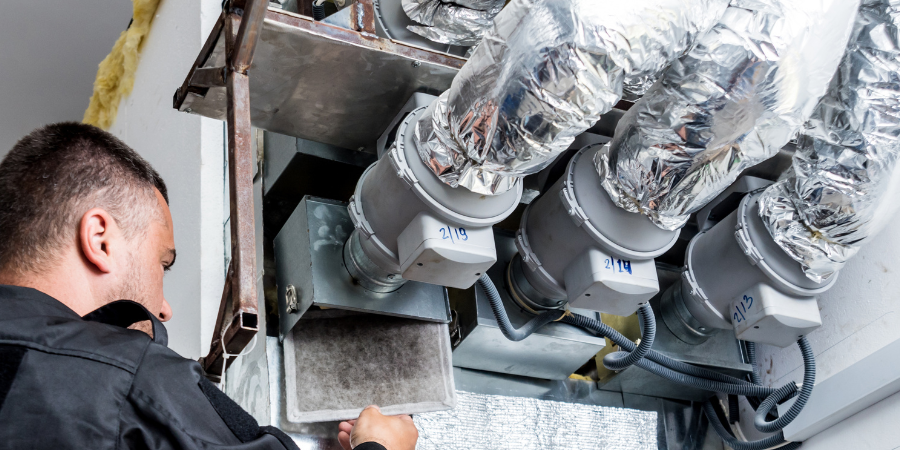
The Critical Importance of Maintaining and Cleaning Dryer Ducts
Maintaining and cleaning dryer ducts is not just a matter of efficiency; it's a crucial safety practice that can prevent disasters and save money in the long run. Let's delve into why this mundane task should be a priority for business owners and management teams.
Fire Hazards
The most alarming risk associated with neglected laundry ducting is fire. Lint, which is highly combustible, can accumulate in the ducts and become a ticking time bomb. Gas tumble dryers, which operate with a naked flame, are particularly vulnerable. When lint build-up and the naked flame come into close contact, the risk of ignition increases exponentially. In fact, a significant number of laundry room fires are attributed to blocked ducting.
Increased Energy Costs
A clogged dryer pipe means your dryer must work overtime. Extended drying times are not just an inconvenience; they signify that your dryer is becoming less efficient and more energy intensive. This inefficiency translates directly into higher energy bills, making it an expensive oversight.
Poor Drying Performance
When dryer vents are blocked, the machine struggles to expel hot, moist air, leading to poor drying results. Clothes may come out damp or take longer to dry, which is frustrating and counterproductive.
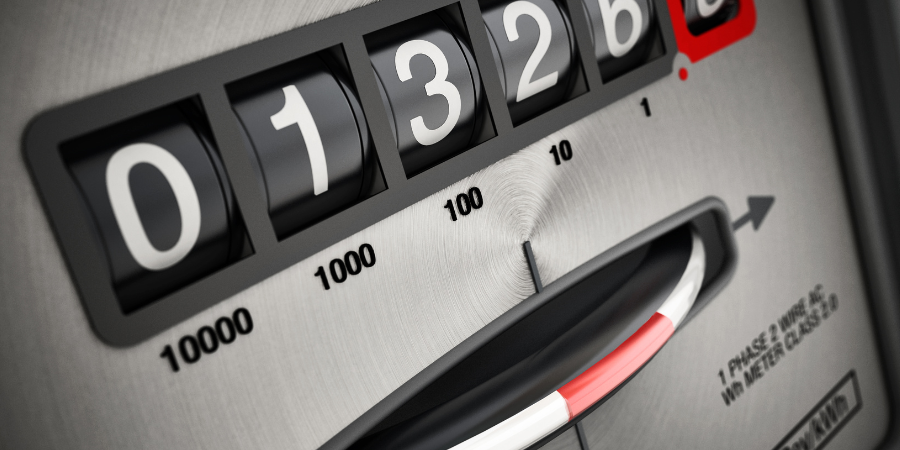
Breakdowns and Downtime
A dryer that's forced to work harder due to obstructed dryer ducting is more prone to breakdowns. These malfunctions can cause inconvenient downtime and necessitate costly repairs. Regular maintenance can help avoid these issues and ensure your dryer operates smoothly.
Decreased Lifespan of the Machine
The additional strain placed on a dryer by blocked laundry ducts can significantly reduce its lifespan. This means you'll be faced with the expense and hassle of replacing the machine much sooner than expected.
Legal Compliance and Workplace Safety
For employers, the stakes are even higher. There's a legal obligation to provide a safe working environment, which includes regular maintenance checks. Annual Gas Safety inspections carried out by a Gas Safe registered company and engineer are mandatory. Non-compliance can result in severe penalties and even prosecution.
In summary
The maintenance of dryer ducts is a small task with big implications. It's essential for preventing fires, reducing energy costs, ensuring efficient performance, avoiding breakdowns, and prolonging the life of your dryer. For businesses, it's also a legal requirement tied to workplace safety. So, make sure to schedule regular cleanings and inspections to keep your dryer ducts and your peace of mind intact.
Remember, a clean duct is a safe duct. Don't overlook this critical aspect of home and workplace maintenance.
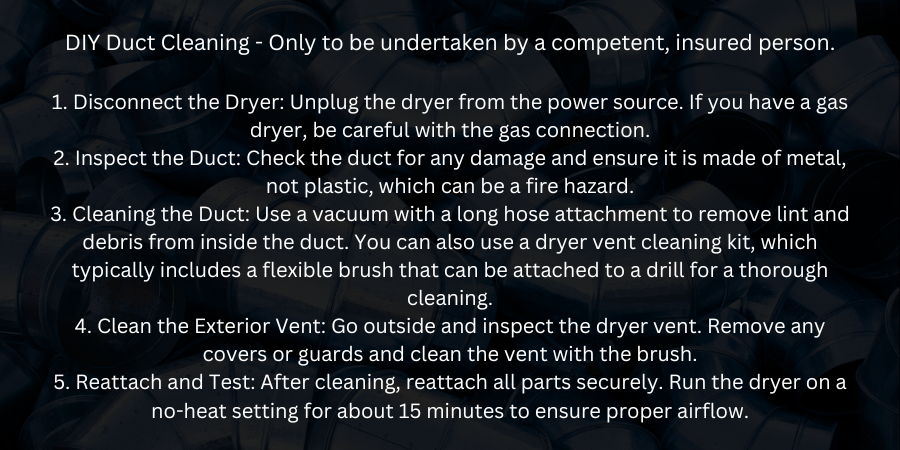
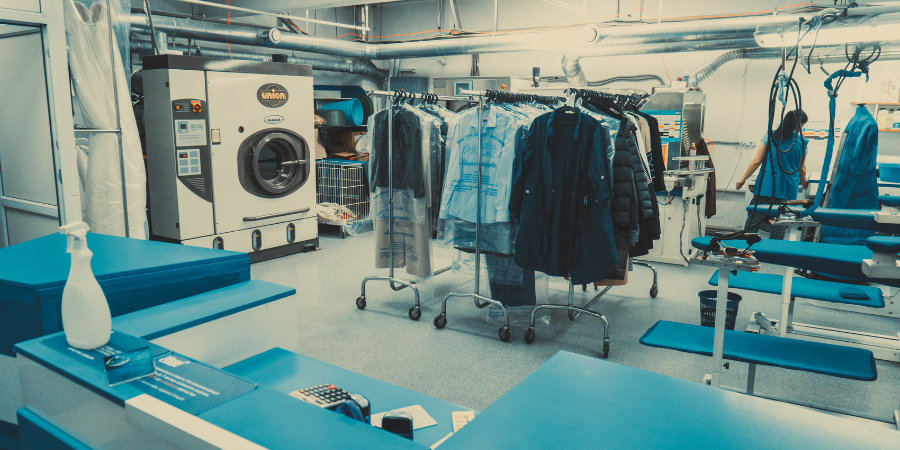
Case study of a laundry duct clean
This laundry duct clean was undertaken in early 2024, inside a care home.
The care home manager contacted us after their on-site dryer failed its gas safety test. The engineer had inspected the laundry ductwork and found it to be completely full of lint and dust. The care home was formally a pub and the tumble dryer had been crudely connected to an old ducting many, many years previous. The ducting design was deemed incorrect and in need of an urgent deep clean. Unfortunately, the engineer had to decommission the dryer until the work was completed.
We have an existing relationship with the home as we undertake their annual kitchen extraction clean, so their manager contacted us for help. After receiving images from the home, we sent over a quote and availability for a clean to be undertaken within the next few days.
This clean was by no means easy, we encountered multiple issues with a lack of access to ductwork as much of it was located behind walls and under floors. The poor design of the vent hindered the use of long reach brushes, so to complete the clean we installed multiple access doors in several locations.
The laundry engineer attended the home whilst we completed the clean. Once the duct clean was completed, the engineer tested and recommissioned the tumble dryer. The care home have asked us to return on an annual basis to clean the laundry ducts.
Total cost: £400 (prices as of January 2024)
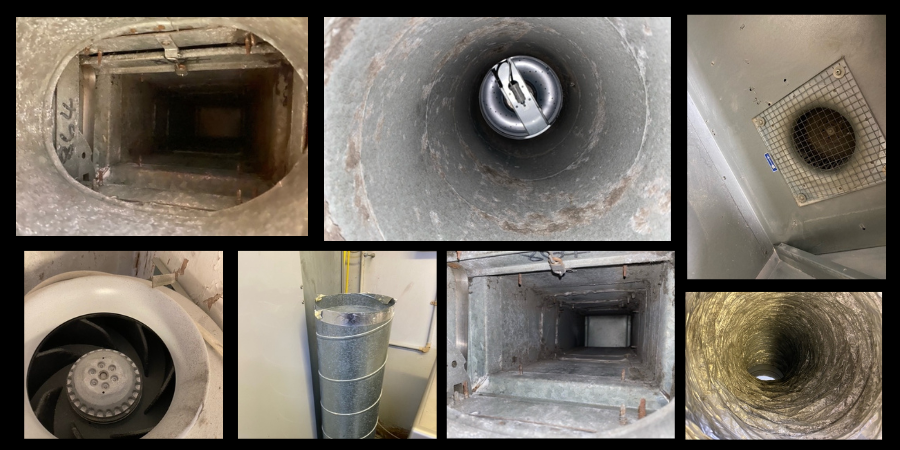
Laundry Duct Cleaning Q&As
Q. How often should laundry ducts be cleaned?
A. It's recommended to clean laundry ducts at least once a year to maintain efficiency and safety, many business owners find that they need to have the drier duct cleaned every 12 months to pass their Fire Safety Risk Assessment and satisfy their buildings insurance.
Q. What are the signs that my dryer ducts need cleaning?
A. Increased drying times, overheating of the dryer, and visible lint buildup are common signs.
Q. Can I clean my laundry ducts myself?
A. Yes, with the right tools and knowledge, you can perform a basic cleaning. However, professional cleaning is recommended for a thorough job, and often mandatory for your building’s insurance and Fire Safety Risk Assessment.
Q: What tools are needed for cleaning laundry ducts?
A. HEPA vacuum with a long hose, dryer vent brush kit, and UL-listed metal foil duct tape are essential for cleaning.
Q: What is the main benefit of regular tumble dryer duct cleaning?
A: Regular cleaning prevents lint buildup, which can improve efficiency and reduce fire risks.
Q: Are there legal requirements for laundry duct cleaning?
A: Yes, various UK laws and regulations mandate the cleaning of ducts to ensure health and safety at work.
Q: What is TR19, and how does it relate to duct cleaning?
A: TR19 is a set of guidelines that provide best practices for internal cleanliness of ventilation systems, including laundry ducts.
Q: How does non-compliance with duct cleaning regulations affect insurance?
A: Failure to comply with laundry vent cleaning regulations can invalidate insurance policies in the event of a fire.
Q: What standards should be followed for dryer ducting cleaning?
A: The TR19 and BS EN 15780 standards are widely recognised for duct cleaning practices.
Q: Is annual inspection of gas-heated laundry equipment a legal requirement?
A: Yes, annual inspections are required to ensure the safe operation of gas-heated laundry equipment.
Q: How does lint buildup in dryer ducts pose a fire risk?
A: Lint is highly flammable, and excessive buildup can lead to overheating and potential fires.
Q: What measures can reduce the fire risk in laundry ducts?
A: Regular cleaning, proper maintenance, and ensuring good airflow can significantly reduce fire risks within commercial laundry ducts.
Q: Can a fire start even if the dryer is not in use?
A: Yes, spontaneous combustion can occur due to residual heat and chemical reactions in the lint.
Q: What should be done if a tumble dryer fire is suspected?
A: Immediately turn off and unplug the dryer, evacuate the area, and call emergency services.
Q: How can fire safety be improved in laundry facilities?
A: Installing fire alarms, conducting regular fire risk assessments, regular laundry ducting cleaning and training staff on fire safety protocols can improve safety.
Q: What is the first step in the dryer duct cleaning process?
A: The first step is to disconnect the dryer from the power source and access the ductwork.
Q: How is the lint removed from the ducts?
A: Lint is removed using a combination of high powered vacuuming and brushing with specialised duct cleaning tools.
Q: Can chemical cleaners be used in the duct cleaning process?
A: Chemicals may be used to dissolve stubborn deposits, but they should be used cautiously and in accordance with safety guidelines.
Q: What is a backdraft check, and why is it important?
A: backdraft check ensures that the ducting is working efficiently and safely after cleaning.
Q: How is the effectiveness of duct cleaning verified?
A: After cleaning, airflow measurements and visual inspections are conducted to ensure the laundry ducts are clean.
Q: How does duct cleaning contribute to a better work environment?
A: Clean ducts improve air quality, reduce allergens, and create a healthier workspace.
Q: What steps can laundry facilities take to be more environmentally friendly?
A: Using eco-friendly machines, conserving water, and switching to renewable energy sources are key steps.
Q: How can workflow be optimised in a laundry facility?
A: Establishing a clear path for dirty and clean laundry and ensuring adequate space for employees can improve workflow.
Q: What role does staff training play in maintaining a good work environment?
A: Proper training ensures that employees can efficiently and safely operate laundry equipment.
Q: How can laundry facilities reduce their carbon footprint?
A: By implementing energy-saving practices, using eco-friendly products, and recycling resources.
Q: What impact does dryer duct cleaning have on dryer efficiency?
A: Clean ducting allows for better airflow, which can shorten drying times and lower energy costs.
Q: Can upgrading laundry equipment lead to cost savings?
A: Yes, newer models are often more energy-efficient and can reduce long-term operational costs.
Q: How does proper loading of laundry machines affect efficiency?
A: Proper loading ensures that machines operate at optimal capacity, preventing wasted energy and time.
Q: What maintenance practices can lead to cost savings in laundry facilities?
A: Regular maintenance can prevent costly breakdowns and extend the lifespan of laundry equipment.
Q: How does soap usage affect laundry facility costs.
A: Using the correct amount of soap can prevent waste and ensure efficient cleaning, saving on supply costs.
Q: What is the difference between cleaning ducts for tumble dryers and flatwork ironers?
A: The process is similar, but flatwork ironers may require additional steps due to their design and usage.
Q: How does gas safety relate to laundry duct cleaning?
A: Gas-heated laundry equipment requires regular inspections to prevent hazards like carbon monoxide leaks.
Q: What is the role of lint screens and filters in laundry duct maintenance?
A: Lint screens and filters catch most lint, but regular laundry duct cleaning is still needed to remove what gets through.
Q: Can laundry duct cleaning improve the lifespan of laundry equipment?
A: Yes, removing lint and debris can prevent overheating and wear, extending equipment lifespan.
Q: What are some signs of an inefficient laundry duct system?
A: Poor drying performance, increased energy bills, and frequent equipment malfunctions are common signs.
Q: Why is it important to keep laundry ducting clean?
A: Clean dryer ducts ensure safe and efficient operation, reduce fire risks, and maintain good air quality.
Q: What are the consequences of neglecting laundry duct maintenance?
A: Neglect can lead to fires, health hazards, increased costs, and equipment damage.
Q: How does laundry vent cleaning affect drying times?
A: Cleaning removes obstructions, allowing for faster drying times and more efficient operation.
Q: What should be included in a laundry facility's fire safety plan?
A: Regular duct cleaning, fire extinguishers, evacuation plans, and staff training are essential components.
Q: Can laundry duct cleaning be part of a sustainability strategy?
A: Yes, it contributes to energy conservation and overall environmental responsibility.
Q: What technological advancements are available for laundry duct cleaning?
A. High-powered vacuum machines and advanced brushing systems are among the latest tools.
Q: How can automation improve dryer duct maintenance?
A: Automated systems can schedule cleanings and monitor duct conditions for proactive maintenance.
Q: Are there any innovations in lint filtration for laundry ducts?
A: Yes, newer lint filtration systems are more effective at trapping particles before they enter the ducting.
Q: How does the design of laundry ductwork affect maintenance needs?
A: Well-designed laundry duct is easier to clean and maintain, reducing long-term costs and risks.
Q: Can energy recovery systems be used in laundry facilities?
A: Energy recovery systems can capture heat from exhaust air to preheat incoming air, saving energy.
Q: How does duct cleaning contribute to indoor air quality?
A: It removes contaminants that can circulate in the air, improving overall air quality.
Q: What are some common challenges in laundry pipe cleaning?
A: Accessing all parts of the ductwork and dealing with heavy lint buildup are typical challenges.
Q: How can laundry facilities prepare for a dryer duct cleaning service?
A: Clearing the area around the dryer and ensuring easy access to ducts can help prepare for service.
Q: What future trends are expected in laundry duct maintenance?
A: Increased focus on sustainability, automation, and advanced filtration systems are likely trends.
